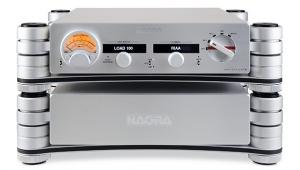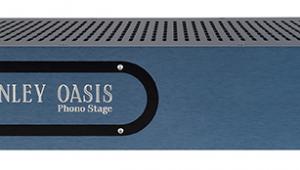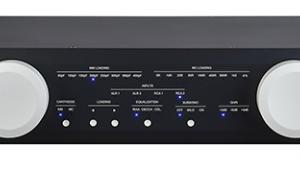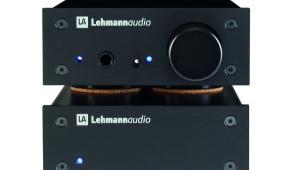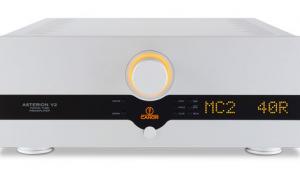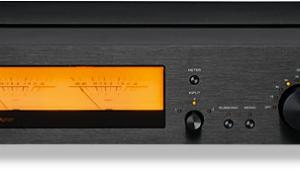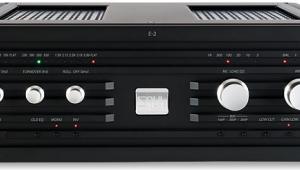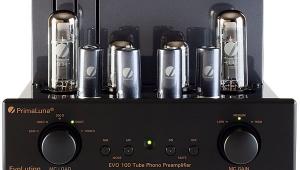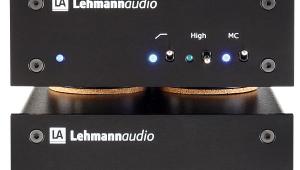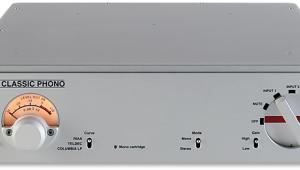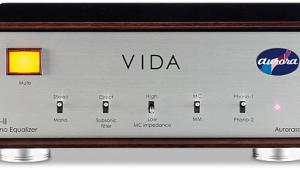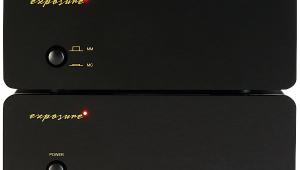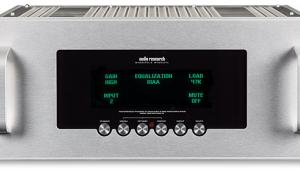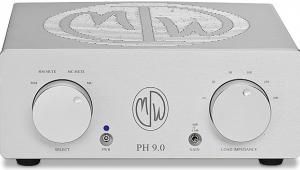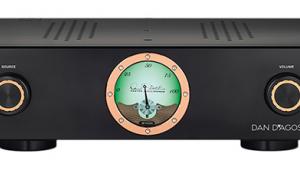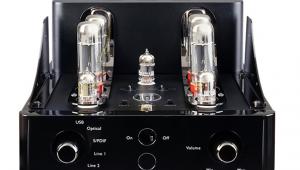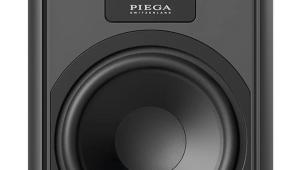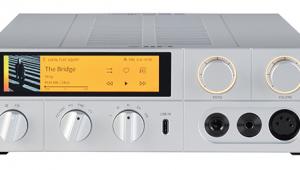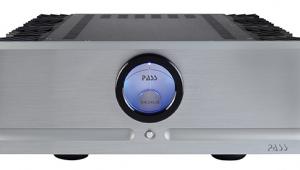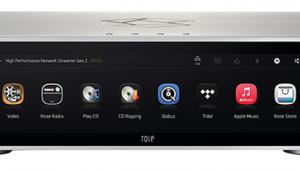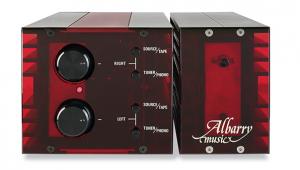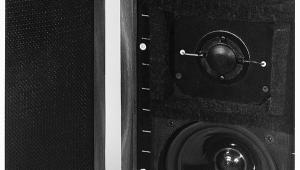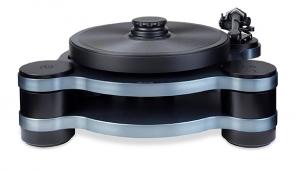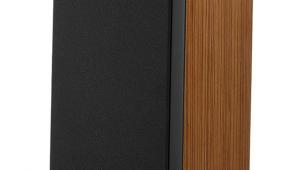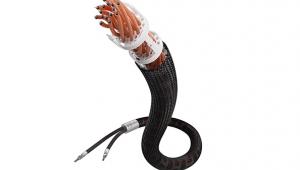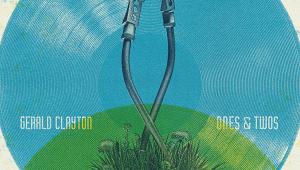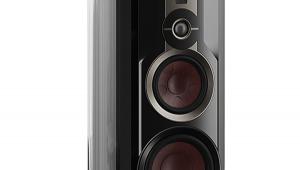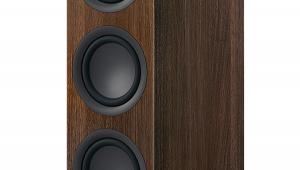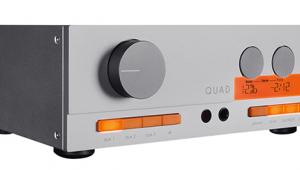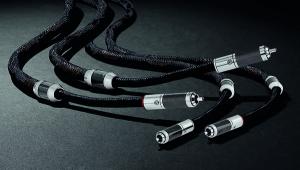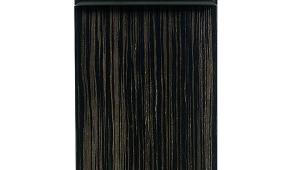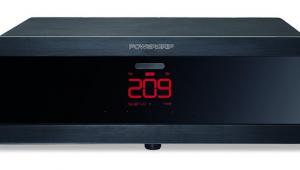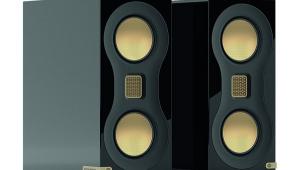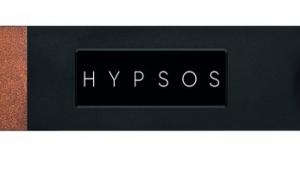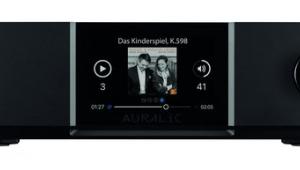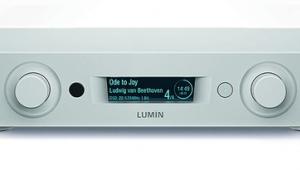EAT E-Glo 2 MM/MC tube phono preamplifier
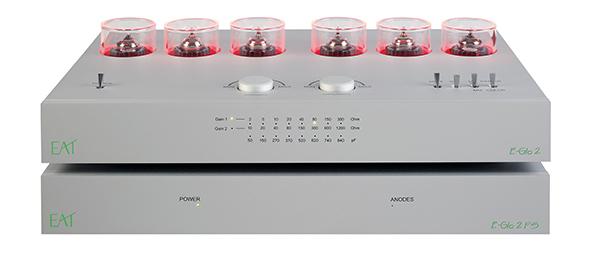

After ten faultless years of duty, my trusty reference phono stage, the EAT E-Glo, has been superseded by the E-Glo 2 (£7999). The changes turn out to be more than merely cosmetic, as I was first led to believe in a hasty conversation with EAT (European Audio Team) founder and CEO Jozefina Lichtenegger. She matter-of-factly explained that, due to customer demand, the company redesigned the look of the E-Glo in a number of ways.
Not least was giving the external power supply the exact same look – the same slim alloy chassis – as the phono preamplifier itself. You can position them side-by-side or stacked, and I prefer the latter because it saves space. What inspired the update was how the original E-Glo came fitted with wooden side cheeks on the control section, while the power supply did not. This could create a disconcerting look when you partnered the two boxes.
Let it glo
Even more controversial was the protection for the six valves – four ECC83s and two ECC88s – which on the E-Glo comprised three layers of circular metal discs and made it look like a spacecraft. For the E-Glo 2, and what is the most obvious visual change, the valves are now surrounded by clear glass-like cylinders that can be illuminated in one of four colours and at four levels of brightness (or switched off, if you wish). The choices are blue, red, green and a sort of spearmint-y white. Amusingly, the blue glow matches McIntosh and vintage Marantz lighting.
While dealing with external details, the E-Glo 2 is offered in black or silver, and magnetic side cheeks are now optional, available in ‘high gloss Makassar or piano black’. Dimensionally, the phono section measures 395x86x262mm (whd) and the power supply 395x61x280mm. All the rest save for two tiny details remains unchanged, including the green LEDs on the front to show cartridge settings, while the four switches operate mute, subsonic filter and MM/MC input select, the latter on both RCA and balanced XLR connections.
2b or not 2b?
This balanced MC input is a new feature, as is the fourth switch in this row for the choice of tube illumination colour and brightness. Two rotaries define the MC impedance, with ‘Gain 1’ mode offering the highest 76dB gain with 10-1200ohm loading and ‘Gain 2’ (70dB) for 2-300ohm. MM capacitance values remain, too, at 50-840pF.
Save for the XLR inputs, the rear panel resembles that of the E-Glo. There are RCA connections for MM and single-ended MC, along with banks of DIP switches to set the primary cartridge gain for MC. The main power switch is at the back of the power supply, the toggle on the top of the phono section taking it out of standby. Connection between the two sections is through a 10-pin cable.
It’s worth noting here that EAT, like Pro-Ject, Thorens and others, is embracing XLR balanced operation for MC cartridges. When asked why the E-Glo 2 had balanced inputs but not outputs, Jozefina explained that the high cost of implementing a true balanced output would have further elevated the price of the E-Glo 2, which she wanted to keep as close as possible to the legacy model. But she did leak a look to the future, saying ‘there may be an “E-Glo 2B” with balanced output on the horizon’.
Crystal clear
The cosmetic and input changes are enough to justify this phono stage’s model name change. However, it turns out there’s another internal upgrade, and this further rendered audible differences when used side-by-side with the original E-Glo, with the same cartridges and exact settings. EAT has installed new ‘semi-crystalline hydrocarbon polypropylene film’ capacitors instead of the E-Glo’s MKP capacitors in the gain and RIAA stages. To this I will only add that the E-Glo 2 seemed a bit quieter, but then my E-Glo has older valves and a decade’s worth of wear-and-tear on it.
At this stage, I would ask you to grab a cup of tea or coffee and read PM’s ‘Max Headroom’ boxout [see here] and the Lab Report [see here]. More than any phono stage I have reviewed in recent memory, EAT’s E-Glo 2 is hyper-critical of cartridge choice due to the headroom limitations. Before seeing this boxout, I had been questioning my hearing, the condition of my cartridges, the tonearm setup and other concerns, so distorted was the sound with – purely coincidentally – the Ortofon 2M Red that PM cites in his analysis, and a high-ish output moving-coil.
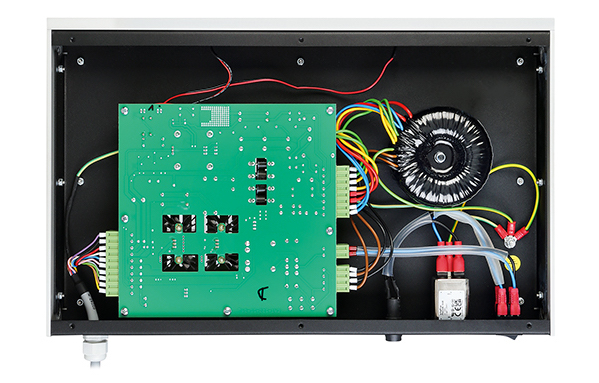
Once PM had reassured me I wasn’t imagining things, I need not replace any styli, and I found cartridges which could be used confidently with E-Glo 2, my initial reaction was of hearing a cooler-sounding, slightly faster iteration of the original E-Glo. The most significant variances occurred when using balanced inputs, which (and I know studio types will pooh-pooh this) seemed to lower the noise floor a bit. Either that, or it increased the dynamic span. Whatever the benefits, I stayed with MC via XLRs for most of the listening.
![]() Much to gain
Much to gain
Part of the transition from ‘overload’ to bliss took place in the middle of a binge of the new Beatles box set, The 1964 US Albums In Mono [Apple 02465 71746]. I knew there was hostility toward the US mixes, but I certainly didn’t recall them ever suffering raspy noises which sounded horrifically like mistracking. As it turned out, it was the above-cited overload. Changing cartridges, and I was suddenly transported to my bedroom at Ashmont Street, Portland, Maine, listening to the mono US Beatles LPs when I was 12. Only then it was via a record player that probably tracked at 1lb.
Image solidity was exceptional and switching from stereo to mono on the Audio Research REF 6SE preamplifier [HFN Jan ’21] showed no discernible differences. This will matter for those who have a number of mono LPs but haven’t seen the value in a mono cartridge, or whose preamp lacks a mono/stereo selector. What was just as commendable was the way the set-up extracted exceptional low-level detail, but I am loath to suggest I was hearing new sounds in recordings I must have played a few hundred times. Suffice it to say, my opinion of these reissues ascended to a new high.
Call a doctor
Where the E-Glo 2 showed improvement over the E-Glo was in its ‘snap’ or speed, notable on such elements as the cowbell in ‘You Can’t Do That’. Even more valuable to this six-decades-plus Beatlemaniac was the manner in which each voice in the harmonising was perfectly identifiable. So fresh-sounding was this that I had to dig out my original copies to make certain I was hearing the E-Glo 2 and not the remastering. And, yes, it was the same with my 1964 pressings: the E-Glo 2 digs deep.
Sound quality certainly wasn’t a question with that audiophile-grade masterpiece, Dr. John’s The Brightest Smile In Town [Sundazed LP5659], a truly exceptional solo piano recording. Being just the Good Doctor and piano, it didn’t fully challenge the soundstaging nor stereo capabilities of the E-Glo 2 after just six mono LPs. However, the fullness of the instrument did vary when fiddling with the mono/stereo toggle, the E-Glo 2 reproducing it with a 3D quality that somehow evinced a positioning of Dr. John just where he should be and in scale.
What it also underscored was the superiority of a live-to-tape, unplugged performance when recorded by a team that knows what it’s doing. If piano is your reference, you’ll find not just the LP itself but the E-Glo 2’s playback to be of outstanding quality. I am not surprised, as Jozefina Lichtenegger would have voiced the E-Glo 2 with unamplified classical music.
Red hot mamma
Turning to something more multi-instrumental, Tina Turner’s Tina Turns The Country On! [Parlophone 5054197929304] from 1974 predates digital recording, so the sound is less clinical than on her platinum sellers a decade later. Here the voice was just as raucous and mike-busting as ever, even though the material was country-pop rather than ‘red hot mamma’ soul belting.
As indicated by The Beatles’ mono recordings, the E-Glo 2 is masterful when it comes to separating layers of sound. Applied to Tina’s studio sessions, on ‘Help Me Make It Through The Night’, with sax, piano, slow percussion and glorious, gospel-type backing, the sound oozed all-analogue warmth. But it never sank into that fat lushness which triggers angst in solid-state devotees: the crispness remained on the tapping of the snare, and the piano sounded almost as real as on the Dr. John LP.

By this time, having determined that the E-Glo 2 sounds best in balanced mode and that it therefore prefers MCs, I suspected it was voiced as well using the company’s Jo No8 moving-coil [HFN Dec ’19]. So, yes, it matched that cartridge like salt-beef-and-rye. The synergy was inescapable, but it also dovetailed with a vintage Koetsu Urushi.
Glad to meet you
I don’t want to apply too restrictive a set of conditions to this phono amp, as there’s a plethora of cartridges which will not tax its headroom constraints. But following PM’s lead, this must be addressed when shopping for any phono stage. The big question would be: is it worth the added effort? It only took one LP to push all those buttons which deliver that epiphany when you know the sound is so right.
Admittedly, Skip James’ Today! [Bluesville/Craft Recordings R00744] is another mainly unplugged, lone-instrument affair, but the sound is the direct opposite of the Dr. John set. It’s guitar rather than piano, and Skip’s voice is high and clear, an almost nasal falsetto that’s lighter and more fragile than Dr. John’s. On his classic reading of ‘I’m So Glad’, the voice floats, while the intricate acoustic guitar fingers are so vivid and tactile that it’s hard to believe Cream turned this into a heavy rock gem. ‘Sublime’ best describes it.
Hi-Fi News Verdict
While in no position to replace the E-Glo, which remains my reference, the temptation is there despite the E-Glo 2’s aversion to high-output pick-ups. It’s versatile, it will accept three turntable/cartridge set-ups and above all, it precludes equally adaptable but all-solid-state phono amps for one over-riding reason: it sounds as a pure-valve phono stage should, but without hum or noise. And, oh, that illumination!
Sound Quality: 85%
